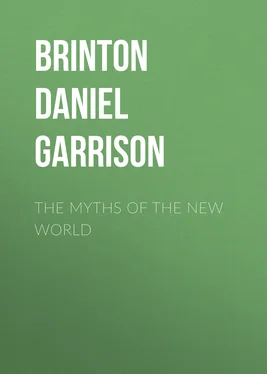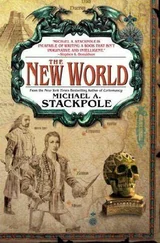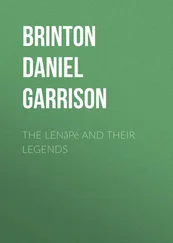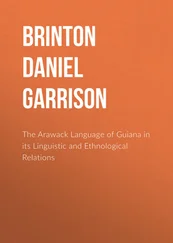Daniel Brinton - The Myths of the New World
Здесь есть возможность читать онлайн «Daniel Brinton - The Myths of the New World» — ознакомительный отрывок электронной книги совершенно бесплатно, а после прочтения отрывка купить полную версию. В некоторых случаях можно слушать аудио, скачать через торрент в формате fb2 и присутствует краткое содержание. Жанр: foreign_prose, История, Старинная литература, Мифы. Легенды. Эпос, foreign_edu, foreign_antique, на английском языке. Описание произведения, (предисловие) а так же отзывы посетителей доступны на портале библиотеки ЛибКат.
- Название:The Myths of the New World
- Автор:
- Жанр:
- Год:неизвестен
- ISBN:нет данных
- Рейтинг книги:5 / 5. Голосов: 1
-
Избранное:Добавить в избранное
- Отзывы:
-
Ваша оценка:
- 100
- 1
- 2
- 3
- 4
- 5
The Myths of the New World: краткое содержание, описание и аннотация
Предлагаем к чтению аннотацию, описание, краткое содержание или предисловие (зависит от того, что написал сам автор книги «The Myths of the New World»). Если вы не нашли необходимую информацию о книге — напишите в комментариях, мы постараемся отыскать её.
The Myths of the New World — читать онлайн ознакомительный отрывок
Ниже представлен текст книги, разбитый по страницам. Система сохранения места последней прочитанной страницы, позволяет с удобством читать онлайн бесплатно книгу «The Myths of the New World», без необходимости каждый раз заново искать на чём Вы остановились. Поставьте закладку, и сможете в любой момент перейти на страницу, на которой закончили чтение.
Интервал:
Закладка:
The wampum used by the tribes of the north Atlantic coast was, in many respects, analogous to the quipu. In early times it was composed chiefly of bits of wood of equal size, but different colors. These were hung on strings which were woven into belts and bands, the hues, shapes, sizes, and combinations of the strings hinting their general significance. Thus the lighter shades were invariable harbingers of peaceful or pleasant tidings, while the darker portended war and danger. The substitution of beads or shells in place of wood, and the custom of embroidering figures in the belts were, probably, introduced by European influence.
Besides these, various simpler mnemonic aids were employed, such as parcels of reeds of different lengths, notched sticks, knots in cords, strings of pebbles or fruit-stones, circular pieces of wood or slabs pierced with different figures which the English liken to “cony holes,” and at a victory, a treaty, or the founding of a village, sometimes a pillar or heap of stones was erected equalling in number the persons present at the occasion, or the number of the fallen.
This exhausts the list. All other methods of writing, the hieroglyphs of the Micmacs of Acadia, the syllabic alphabet of the Cherokees, the pretended traces of Greek, Hebrew, and Celtiberic letters which have from time to time been brought to the notice of the public, have been without exception the products of foreign civilization or simply frauds. Not a single coin, inscription, or memorial of any kind whatever, has been found on the American continent showing the existence, either generally or locally, of any other means of writing than those specified.
Poor as these substitutes for a developed phonetic system seem to us, they were of great value to the uncultivated man. In his legends their introduction is usually ascribed to some heaven-sent benefactor, the antique characters were jealously adhered to, and the pictured scroll of bark, the quipu ball, the belt of wampum, were treasured with provident care, and their import minutely expounded to the most intelligent of the rising generation. In all communities beyond the stage of barbarism a class of persons was set apart for this duty and no other. Thus, for example, in ancient Peru, one college of priests styled amauta , learned, had exclusive charge over the quipus containing the mythological and historical traditions; a second, the haravecs , singers, devoted themselves to those referring to the national ballads and dramas; while a third occupied their time solely with those pertaining to civil affairs. Such custodians preserved and prepared the archives, learned by heart with their aid what their fathers knew, and in some countries, as, for instance, among the Panos mentioned above, and the Quiches of Guatemala, 10 10 An instance is given by Ximenes, Origen de los Indios de Guatemala , p. 186: Vienna, 1856.
repeated portions of them at times to the assembled populace. It has even been averred by one of their converted chiefs, long a missionary to his fellows, that the Chipeways of Lake Superior have a college composed of ten “of the wisest and most venerable of their nation,” who have in charge the pictured records containing the ancient history of their tribe. These are kept in an underground chamber, and are disinterred every fifteen years by the assembled guardians, that they may be repaired, and their contents explained to new members of the society. 11 11 George Copway, Traditional History of the Ojibway Nation , p. 130: London, 1850.
In spite of these precautions, the end seems to have been very imperfectly attained. The most distinguished characters, the weightiest events in national history faded into oblivion after a few generations. The time and circumstances of the formation of the league of the Five Nations, the dispersion of the mound builders of the Ohio valley in the fifteenth century, the chronicles of Peru or Mexico beyond a century or two anterior to the conquest, are preserved in such a vague and contradictory manner that they have slight value as history. Their mythology fared somewhat better, for not only was it kept fresh in the memory by frequent repetition; but being itself founded in nature, it was constantly nourished by the truths which gave it birth. Nevertheless, we may profit by the warning to remember that their myths are myths only, and not the reflections of history or heroes.
Rising from these details to a general comparison of the symbolic and phonetic systems in their reactions on the mind, the most obvious are their contrasted effects on the faculty of memory. Letters represent elementary sounds, which are few in any language, while symbols stand for ideas, and they are numerically infinite. The transmission of knowledge by means of the latter is consequently attended with most disproportionate labor. It is almost as if we could quote nothing from an author unless we could recollect his exact words. We have a right to look for excellent memories where such a mode is in vogue, and in the present instance we are not disappointed. “These savages,” exclaims La Hontan, “have the happiest memories in the world!” It was etiquette at their councils for each speaker to repeat verbatim all his predecessors had said, and the whites were often astonished and confused at the verbal fidelity with which the natives recalled the transactions of long past treaties. Their songs were inexhaustible. An instance is on record where an Indian sang two hundred on various subjects. 12 12 Morse, Report on the Indian Tribes , App. p. 352.
Such a fact reminds us of a beautiful expression of the elder Humboldt: “Man,” he says, “regarded as an animal, belongs to one of the singing species; but his notes are always associated with ideas.” The youth who were educated at the public schools of ancient Mexico—for that realm, so far from neglecting the cause of popular education, established houses for gratuitous instruction, and to a certain extent made the attendance upon them obligatory—learned by rote long orations, poems, and prayers with a facility astonishing to the conquerors, and surpassing anything they were accustomed to see in the universities of Old Spain. A phonetic system actually weakens the retentive powers of the mind by offering a more facile plan for preserving thought. “ Ce que je mets sur papier, je remets de ma mémoire ” is an expression of old Montaigne which he could never have used had he employed ideographic characters.
Memory, however, is of far less importance than a free activity of thought, untrammelled by forms or precedents, and ever alert to novel combinations of ideas. Give a race this and it will guide it to civilization as surely as the needle directs the ship to its haven. It is here that ideographic writing reveals its fatal inferiority. It is forever specifying, materializing, dealing in minutiæ. In the Egyptian symbolic alphabet there is a figure for a virgin, another for a married woman, for a widow without offspring, for a widow with one child, two children, and I know not in how many other circumstances, but for woman there is no sign. It must be so in the nature of things, for the symbol represents the object as it appears or is fancied to appear, and not as it is thought . Furthermore, the constant learning by heart infallibly leads to slavish repetition and mental servility.
A symbol when understood is independent of language, and is as universally current as an Arabic numeral. But this divorce of spoken and written language is of questionable advantage. It at once destroys all permanent improvement in a tongue through elegance of style, sonorous periods, or delicacy of expression, and the life of the language itself is weakened when its forms are left to fluctuate uncontrolled. Written poetry, grammar, rhetoric, all are impossible to the student who draws his knowledge from such a source.
Читать дальшеИнтервал:
Закладка:
Похожие книги на «The Myths of the New World»
Представляем Вашему вниманию похожие книги на «The Myths of the New World» списком для выбора. Мы отобрали схожую по названию и смыслу литературу в надежде предоставить читателям больше вариантов отыскать новые, интересные, ещё непрочитанные произведения.
Обсуждение, отзывы о книге «The Myths of the New World» и просто собственные мнения читателей. Оставьте ваши комментарии, напишите, что Вы думаете о произведении, его смысле или главных героях. Укажите что конкретно понравилось, а что нет, и почему Вы так считаете.












